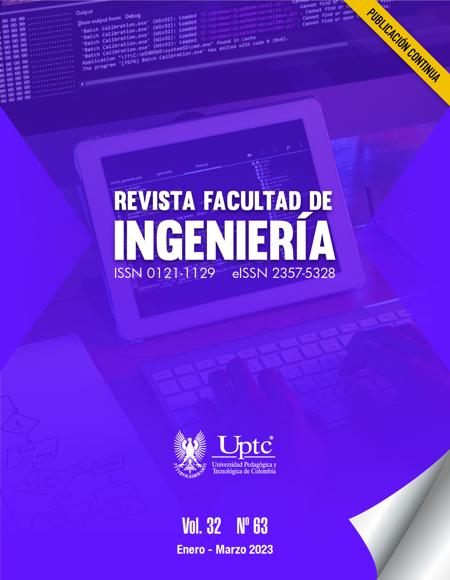Methodology to Prepare Patent Analysis and the Technological Maturity Cycle

Abstract
The analysis of patents and the behavior of technology over time have aroused great interest at institutions and companies because they serve as a guide to make decisions on research and innovation projects. Based on this, a methodology that seeks to guide the reader in the preparation of this type of study; both the body of the document and its interpretation has been developed. Two software were used to describe the extraction of patent data; Orbit Intelligence (Licensed Software) and Lens (Open access version). The information obtained, using the same search equation, was presented. For the analysis of the technological maturity cycle, the logistic model was obtained, and it was executed in the Loglet Lab 4 software to obtain the growth curve S. Finally, the Yoon parameters were presented to give a predictive concept of the behavior of the technology over time. The case study that was taken as an example was the technology of “Antibacterial and self-cleaning surfaces based on TiO2/ZnO”, which applied this methodology, we found that the technology of interest is in the maturity phase. It has a high impact on the market, being an important indicator for decision-making focused on research and development. According to what has been proposed, the exposed methodology is a tool to have in consideration that allows to present a more accurate concept about the future projections of a technology, based on the analysis of patent data. Moreover, it is important to consider the trends of the market and the socio-political situation.
Keywords
Forecasting, orbit, patent analysis, technology life cycle
References
- S. Sinisterra, R. Camargo-Amado, D. Triviño, F. Machuca Martínez, "Análisis del Ciclo de Madurez Tecnológica de Superficies Antibacterianas y Autolimpiantes a base de TiO2/ZnO," Ciencia en desarrollo, vol. 13, no. 1, pp. 115–127, 2022. https://doi.org/10.19053/01217488.v13.n1.2022.13590 DOI: https://doi.org/10.19053/01217488.v13.n1.2022.13590
- F. Machuca-Martinez, R. Camargo, O. Gutierrez, "Coronaviruses: A patent dataset report for research and development (R&D) analysis," Data in Brief, vol. 30, e105551, 2020. https://doi.org/10.1016/j.dib.2020.105551 DOI: https://doi.org/10.1016/j.dib.2020.105551
- J. Sheau-Pyng, L. Ming-Fong, F. Chin-Yuan, “Using Patent Analysis to Analyze the Technological Developments of Virtualization,” Procedia - Social and Behav. Sciences., vol. 57, pp. 146–154, 2012. https://doi.org/10.1016/j.sbspro.2012.09.1168 DOI: https://doi.org/10.1016/j.sbspro.2012.09.1168
- D. Kochetkov, M. Almaganbetov, "Using patent landscapes for technology benchmarking: A case of 5g networks," Advances in Systems Science and Applications, vol. 21, no. 2, pp. 20-28, 2021. https://doi.org/10.25728/assa.2021.21.2.988
- G. Mao, H. Hu, X. Liu, J. Crittenden, N. Huang, “A bibliometric analysis of industrial wastewater treatments from 1998 to 2019,” Environmental Pollution, vol. 275, e115785, 2021. https://doi.org/10.1016/j.envpol.2020.115785 DOI: https://doi.org/10.1016/j.envpol.2020.115785
- M. Nagula, "Forecasting of Fuel cell technology in hybrid and electric vehicles using Gompertz growth curve," Journal of Statistics and Management Systems, vol. 19, no. 1, pp. 73-88, 2016. https://doi.org/10.1080/09720510.2014.1001601 DOI: https://doi.org/10.1080/09720510.2014.1001601
- J. Yoon, B. Jeong, W. H. Lee, J. Kim, “Tracing the Evolving Trends in Electronic Skin (e-Skin) Technology Using Growth Curve and Technology Position-Based Patent Bibliometrics,” IEEE Access, vol. 6, pp. 26530–26542, 2018. https://doi.org/10.1109/ACCESS.2018.2834160 DOI: https://doi.org/10.1109/ACCESS.2018.2834160
- M. E. Leitch, E. Casman, G. V. Lowry, “Nanotechnology patenting trends through an environmental lens: Analysis of materials and applications,” Journal of Nanoparticle Research, vol. 14, e1283, 2012. https://doi.org/10.1007/s11051-012-1283-9 DOI: https://doi.org/10.1007/s11051-012-1283-9
- M. M. H. Bellido, H. L. Mendonça, M. V. de A. Fonseca, D. A. C. Branco, A. O. Pereira, “Maturity-based analysis of emerging technologies in the Brazilian Power Sector,” Journal of Cleaning Production, vol. 243, e118603, 2020. https://doi.org/10.1016/j.jclepro.2019.118603 DOI: https://doi.org/10.1016/j.jclepro.2019.118603
- X. Wu, “Application of Logistic Model in City Development Forecast,” in 2nd International Conference on Material Science, Machinery and Energy Engineering, 2017, pp. 706–710. https://doi.org/10.2991/msmee-17.2017.137 DOI: https://doi.org/10.2991/msmee-17.2017.137
- Y. H. Tseng, C. J. Lin, Y. I. Lin, “Text mining techniques for patent analysis,” Information Processing and Management, vol. 43, no. 5, pp. 1216–1247, 2007. https://doi.org/10.1016/j.ipm.2006.11.011 DOI: https://doi.org/10.1016/j.ipm.2006.11.011
- A. Trippe, Guidelines for Preparing Patent Landscape Reports Guidelines prepared for the World Intellectual Property Organization (WIPO) With contributions from WIPO Secretariat, 2015. http://www.wipo.int/tisc/en/
- Elsevier, 11 steps to structuring a science paper editors will take seriously, 2022. https://www.elsevier.com/connect/11-steps-to-structuring-a-science-paper-editors-will-take-seriously
- LogletLab4, Documentation Loglet Lab4, 2021. https://logletlab.com/loglet/documentation/index
- Lens, Support Center, 2021. https://support.lens.org/help-resources/search/scholarly-search/
- WIPO, Patentes, 2022. https://www.wipo.int/patents/es/
- B. Degroote, P. Held, “Analysis of the patent documentation coverage of the CPC in comparison with the IPC with a focus on Asian documentation,” World Patent Information, vol. 54, pp. S78–S84, 2018. https://doi.org/10.1016/j.wpi.2017.10.001 DOI: https://doi.org/10.1016/j.wpi.2017.10.001
- H. Ernst, “The Use of Patent Data for Technological Forecasting: The Diffusion of CNC-Technology in the Machine Tool Industry,” Small Business Economics, vol. 9, no. 4, pp. 361–381, 1997. https://doi.org/10.1023/A:1007921808138 DOI: https://doi.org/10.1023/A:1007921808138
- P. S. Meyer, J. W. Yung, J. H. Ausubel, “A Primer on Logistic Growth and Substitution: The Mathematics of the Loglet Lab Software,” Technological Forecasting and Social Change, vol. 61, no. 3, pp. 247–271, 1999. https://doi.org/10.1016/s0040-1625(99)00021-9 DOI: https://doi.org/10.1016/S0040-1625(99)00021-9
- L. Gao et al., “Technology life cycle analysis method based on patent documents,” Technological Forecasting and Social Change, vol. 80, no. 3, pp. 398–407, 2013. https://doi.org/10.1016/j.techfore.2012.10.003 DOI: https://doi.org/10.1016/j.techfore.2012.10.003
- M. Baumann et al., “Comparative patent analysis for the identification of global research trends for the case of battery storage, hydrogen and bioenergy,” Technological Forecasting Social Change, vol. 165, e120505, 2021. https://doi.org/10.1016/j.techfore.2020.120505 DOI: https://doi.org/10.1016/j.techfore.2020.120505
- J. Yoon, Y. Park, M. Kim, J. Lee, D. Lee, “Tracing evolving trends in printed electronics using patent information,” Journal of Nanoparticle Research, vol. 16, no. 7, e2471, 2014. https://doi.org/10.1007/s11051-014-2471-6 DOI: https://doi.org/10.1007/s11051-014-2471-6
- O. A. Jefferson et al., “Erratum: Mapping the global influence of published research on industry and innovation,” Nature Biotechnology, vol. 36, no. 8, p. 772, 2018. https://doi.org/10.1038/nbt0818-772a DOI: https://doi.org/10.1038/nbt0818-772a